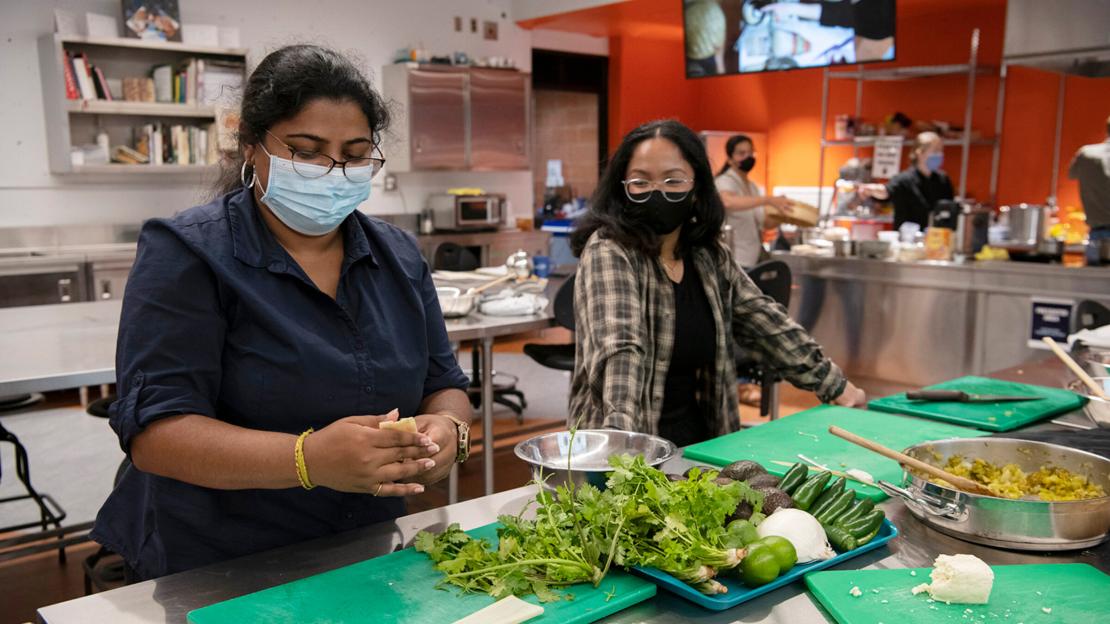Date: July 27
Time: 3:48 p.m.
Campus: Scarborough
As part of a course about the history of food in the Americas, students at U of T Scarborough pound corn dough into tortillas, wrap and steam tamales, and make salsa and guacamole from scratch. Afterward, they will feast on their creations. But the point is not about picking up tips in the kitchen.
In the tutorial above, the students are learning about nixtamalization, a traditional process used by Indigenous peoples in Latin America for preparing maize. The technique involves cooking dried corn kernels steeped in an alkaline solution, usually water and lime, that improves nutritional value, aroma and flavour.
The hands-on instruction takes place in U of T Scarborough’s kitchen lab. Opened in 2016, the facility has everything one would find in a standard industrial kitchen but is also equipped with the ability to livestream and record cooking demonstrations.
In the classroom, students learn about the nutrition, culture and history of different foods. Then, in the kitchen, they get to prepare these foods – often with ingredients they have planted and harvested at the campus farm.
“When you grow food, prepare a dish and then taste it, you get a better sense of food production,” says Jeffrey Pilcher, a professor in the department of historical and cultural studies. “It’s an engaging educational experience.”
